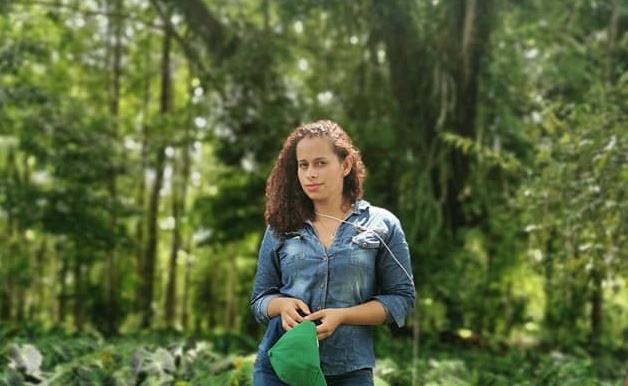New tool puts power of forest monitoring in producers’ hands
Carolina Sarria Hermosa is a manager with Colombia-based association COMICACAO, which works to expand market access and protect the rights of local cacao producers in the region of San Vicente del Caguan. As part of Comicacao’s work, members help monitor deforestation activities around their farms in this vital Amazon region while supporting the establishment of cocoa agroforestry systems that benefit conservation and protect biodiversity. EII, in partnership with Global Forest Watch and Biocomercio Sostenible, has launched a pilot program seeking to help area cacao and rubber farmers more effectively track and report deforestation using their cell phones to be able to certify their production as deforestation-free. Sarria Hermosa says the project will empower local residents and will help foster a deeper culture of conservation in the region. She spoke to EII’s Juan Gabriel Rojas. (This interview has been edited for length and clarity.)

How have you typically monitored deforestation in the past?
We were part of an earlier and still ongoing pilot supported by IDEAM [part of Colombia’s environment ministry]. That effort, which is now in its last phase, focused on visual monitoring of deforestation as well as forest conservation commitments by local producers. The pilot extended across 63 villages in the municipality and has so far helped us define several tools for early reporting of deforestation activities. Now with Global Forest Watch we can integrate this new tool and take advantage of that earlier progress and eventually this will help our producers to more easily meet sustainability standards.
How it works: Under this pilot program, 25 youth have been designated as forest monitors, with one monitor per village. When an alert is detected through the Global Forest Watch (GFW) platform, the monitor travels to the site of the alert and uploads data, including photos and information about potential causes. That information is then aggregated by COMICACAO, which is currently drafting regulations for forest management among its members. EII and its partners are working with 50 families in the cacao and rubber sectors under this program.
Have you seen deforestation increase in recent years?
Yes, but there are multiple factors that drive deforestation in our municipality. When we look at the levels over the last three to four years, we see that in some areas it remains constant, which suggests that while deforestation is still occurring, there is also a growing awareness about the importance of conservation among producers who say, “No, this area is designated for conservation and so we’ll maintain the forest here.” But in other more remote and forested areas, we do see an increase, and that is concerning, because these areas are often out of reach for us and, because of some of the actors involved, it can be difficult for us to have an impact in. But generally the rate of forest loss varies across the municipality.
What do you think is the most impactful tool or strategy to reduce deforestation?
The challenge exists on two levels: the first is the lack of opportunities for producers to shift toward more sustainable practices. Society demands that we change, but they don’t tell us how, and they don’t provide the tools to help us make that change. The second challenge is the lack of awareness, the lack of a culture of conservation. We are not aware of the damage done to us when a tree is lost. I think this tool from Global Forest Watch can help us in that regard by building on the momentum coming from a variety of institutions, from action boards, from community meetings. The message is constant: let’s conserve, let’s mitigate deforestation. That sensibility is developing, in children, in young people, in adults. Tools like this allow us to teach people how to do the monitoring, why it’s so critical, and, most importantly, it allows them to do the monitoring themselves. So, I think this is already a first step.
How does forest monitoring help build a culture of conservation?
These monitoring pilots open people’s minds just a little to the idea of conservation, and they provide a strategy. When people come to show us photos of specific sectors, and they point to where the changes (in forest cover) are, the realization dawns on them that they can be part of the solution. So I have to reiterate here the importance of education and of having a model that lays out clear steps to follow. From there we can start to unify different actors across the community and begin to scale up our impact.
How does COMICACAO specifically plan to use this pilot?
Our goal at COMICACAO is to provide products that are organic and free of deforestation. This will open up new markets and create new opportunities for local producers. But if we’re going to promote a strategy built on conservation, we need the tools and mechanisms to demonstrate that we are in fact doing what we say. And so in a sense this project fits us like a glove.
The technology allows producers who have committed to conserving their forests verify that they have done so. Once their farms are added to the database, we can monitor and confirm their forests are still intact. Then, when buyers pay for this conservation effort, this becomes an added value for our producers. So this fits neatly into our efforts to protect forests and support greater market access for our producers.
More broadly, it would be important to integrate this tool into the other initiatives that we are involved in, all of which have the same goal of reducing deforestation. That would help us use this pilot to orient an entire municipality or city toward a conservation agenda.


